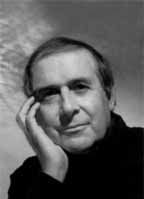
Pearson – here to help
Building an off-grid home can seem like a colossal task. But we are here to help and guide you through it.
David Pearson is an internationally renowned architect and planner. He has agreed to come on this site to answer questions from readers trying to build their own off-grid homes. Send your questions to news@off-grid.net, and we will run a live session to get his answers in January.
Pearson has been involved in inner city and community housing for most of his working life both in Britain and the USA. He has published books on eco-architecture and natural home design. (Click “more” for further details.)
 Designing Your Natural Home – buy it from Amazon US
Designing Your Natural Home – buy it from Amazon US
His work is encouraging, positive and forward-looking. The first sentence in Designing your natural home a practical guide reads You are about to embark on a journey of discovery. More than his other books, this is a practical aid to anyone in the arduous and adventurous process of building their own eco-home.
He draws from 20 years of experience in the fields of ecological design and Gaia philosophy. The premise of Gaia theory is the view that Earth is a living organism, of which human beings and their activities are but a small part. This thinking certainly informs Pearson’s ideas for organic home building. For Designing your natural home he has picked ten case studies ranging from luxury log cabins via organically shaped earthships to urban ecoliving in a converted corner shop. Every case study is accompanied by eco-data, which breaks the facts and figures involved down for an easy overview. The case studies are interspersed with practical advice on your very own off-grid homestead from design, choice of approach, building it to choosing interior materials and personal style and decoration. Beautifully illustrated with many full-page colour pictures of amazing eco-homes the book combines practical considerations with well-researched and well-put environmental thought. It is packed full with logically structured information in textboxes on such issues as sourcing materials, energy-efficiency and finding the right site/ architect/ builder. Architectural sketches help envisaging the working process. The book also contains four pages of contacts at the end which include specialist bookshops, architects specialising in natural homes, suppliers of eco-friendly toilet systems and many other relevant specialists.
 In Search of Natural Architecture – buy it from Amazon
In Search of Natural Architecture – buy it from Amazon
While obviously promoting the practical approach to ecological living, David Pearson also founded the former Ecological Design Association, an educational charity. He is a founder member of Gaia International, a group of eco-architects, who collaborate in competitions and architectural events. In search of natural architecture reflects this more academic side of his experience and looks at the idea of eco-friendly building in a more conceptual way. It is his personal quest for architecture that is in harmony with nature. The book is essentially a visual journey of architecture around the world and from different periods in time. The pictures are complemented by extensive captions. All buildings shown, sacred or secular, old or new, hold a wealth of inspiration of what natural architecture might mean and how it might be used to create off-grid living spaces. To use a quote by Charles Correa, which appears in the book: We have to know from where we are coming to know where we are going. In addition to the pictures there are five essays looking at architecture from a sociological and anthropological point of view. They place living in harmony with nature in the context of history, different civilisations and communities. It is humbling to learn how much educational potential there is in what we to quickly disregard as primitive and inferior technologies and ways of life.
Published in 1994 In search of natural architecture looks a little more dated in its design, but the photography is still a real pleasure to look at.
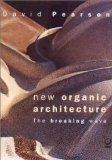 New Organic Architecture: The Breaking Wave – buy it from Amazon
New Organic Architecture: The Breaking Wave – buy it from Amazon
More text-heavy than the other two books New organic architecture the breaking wave is a more theoretical discourse rather than practical information. It is divided into three parts. The introduction is philosophical, but, with subheadings like form follows flow, witty rather than dry. It uses various architect’s quotes highlighting their thoughts on the relationship between built environment and nature.
The next part is called sources and inspirations. It explores architecture’s development from very early and simple dwellings to modern ways of building. It charts the changing levels of inspiration from nature versus scientific reglementation over the course of time and also takes into account artistic approaches like that of Gaudi.
The last part, living organic architecture introduces 30 architects from 15 different countries, some well and others not-so-well-known. Each of them gives their view on the possibilities of organic architecture and tells of projects they have realised with a natural approach in mind.
David Pearson continues to work, lecture and travel widely. Floating Homes in the The House that Jack Built series is to be published soon.
More books by David Pearson on Amazon:
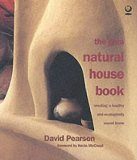 The Gaia Natural House Book: Creating a Healthy and Ecologically Sound Home
The Gaia Natural House Book: Creating a Healthy and Ecologically Sound Home
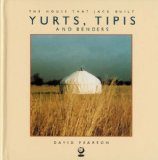 Yurts, Tipis and Benders (House That Jack Built S.)
Yurts, Tipis and Benders (House That Jack Built S.)
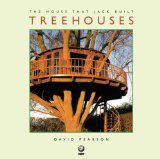 Treehouses (House That Jack Built S.)
Treehouses (House That Jack Built S.)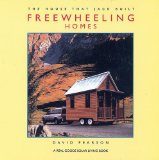 Freewheeling Homes (The House That Jack Built Series)
Freewheeling Homes (The House That Jack Built Series)
5 Responses
Hello David Pearson,
I am a fan of your books, especially because, for the second time, I open the David Pearson book I order on Amazon, and there’s my house!
Art Dyson was my architect when I was in my 20s building the Lencioni Residence (which I rent on VRBO/homeaway) and more recently for the Lapp River House, where I live now–and he’s been my friend all along. I am writing a book advocating organic or reflexive architecture from a CLIENT’s point of view ( I post chapters as I finish them on http://www.orgatecture.org)
I’d love to meet you, of course, and you are welcome to come visit my two, and certainly several more, Arthur Dyson homes and buildings in this area.
If that’s not possible, I wonder if you have any suggestions about where to shop the book (I’m closing in on finishing the working draft). U.C. Berkeley Press is certainly on my list–they have published my friend Scot Zimmerman’s work (the photographer of the Lencioni Residence photo you use).
You call the book I just bought “the breaking wave” (I love it), and Extreme Homes called my house “The Wave House.”
Best regards,
Deborah Lencioni Lapp
Assalamu Alaikum I’m Argentina and want to express my admiration for their innovative ideas and their wonderful creativity. Ma Saleme (peace be upon you)
Hi Mr. David…
I’m student post graduate in Indonesia, i want review about u…
can help me pleasee….i want biografi about u pleasee
Hi David, 20Feb.201
Perhaps it’s twenty years since we chatted several times in London. Would love to re-connect. Please visit my website–fully, then let’s talk, eh? Lawrence
Hi David, I am trying to reach you and Joscelyn but none of your addresses are current. Can you contact me on : 00334607 897154